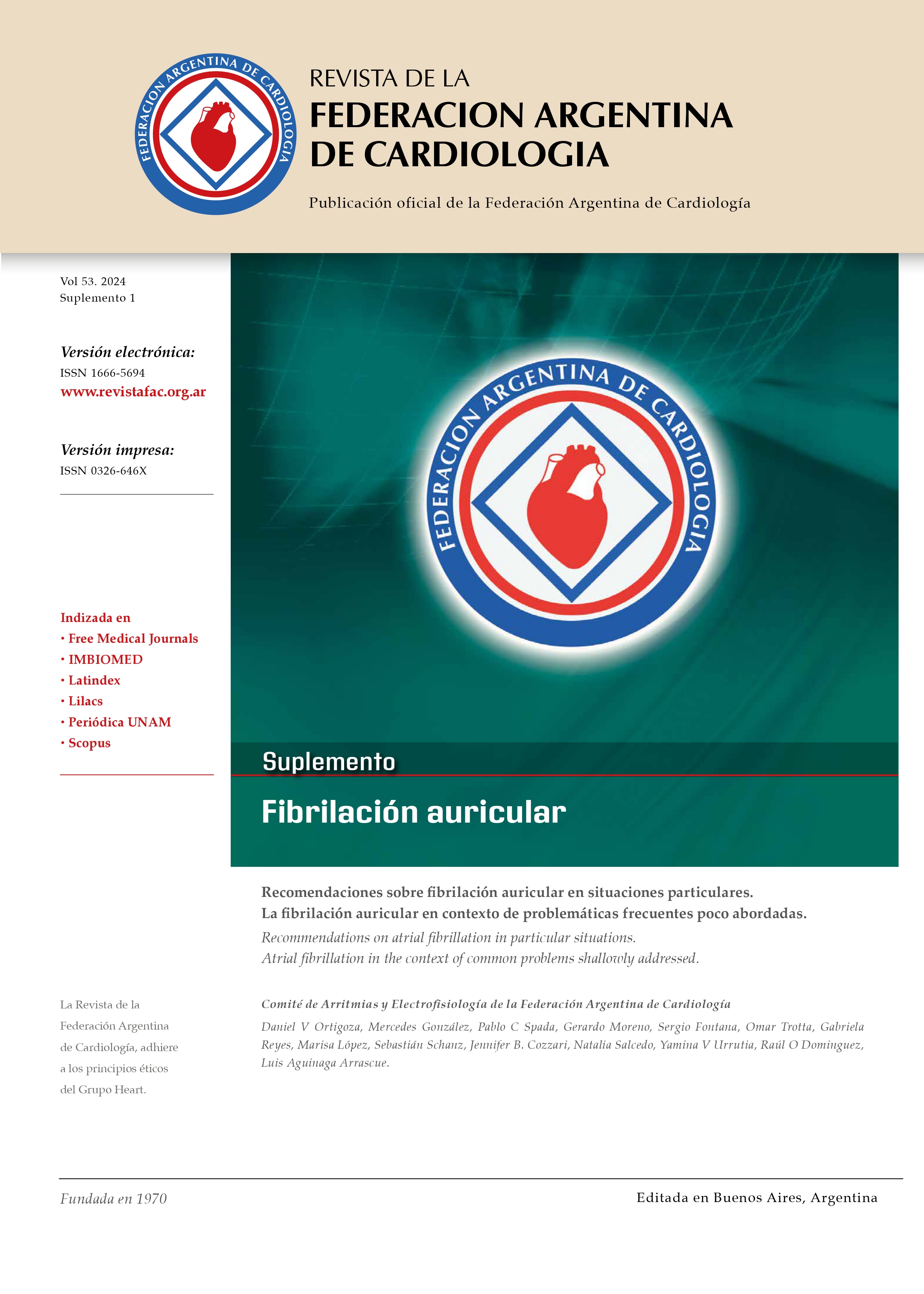Reccomendations on atrial fibrillation in particular situations
Atrial fibrillation in the context of common problems shallowly addressed
Keywords:
Frailty, Anticoagulation, Brugada syndrome, Atrial fibrillation, Chagas diseaseAbstract
Introduction: atrial fibrillation (AF) is an important worldwide health problem. Health inequalities within the same population and in particular groups make it necessary to expand knowledge with the aim of establishing effective preventive strategies. Objective: establish guidelines that are easily usable by the medical community in the diagnosis and treatment of AF in special situations. Materials and methods: AF accompanied by medical situations such as hypertrophic cardiomyopathy, obesity, pregnancy, Chagas disease, Brugada syndrome, frailty, among others, represent a challenge. These recommendations address and complements the guide published in year 2023. It was agreed upon by specialists in internal medicine, neurology, cardiology and electrophysiology, based on evidence proven by the scientific method available to date. Results: this document complements and offers useful updates and advice. The complexity of AF in its different patterns means that it can be present in multiple life situations, determining a greater risk for patients and thus, medical interventions can reduce morbidity and mortality. However, the final decision regarding a specific patient should be made by the responsible doctor applying his or her clinical judgment in consultation with the patient himself, and if necessary, with a legal representative. Conclusions: The diagnosis and treatment of AF requires a multidisciplinary approach. Its complexity means that it can be present in multiple life situations, determining a greater risk for patients.



